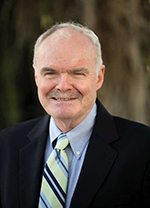Growth is Good. For What?
We are working on a 50th anniversary story of Gulfstream Media Group. The first issue of what is now Gold Coast magazine appeared in the winter of 1965, but the company that launched it was being formed in 1964, so our timing will be the fall of next year. The story of a publication, of course, is also a story of its community. In 50 years all places change, but few have changed as much as South Florida. The growth has been enormous. What is now the Galt Ocean Mile had a few tall condos, but most were under construction, the cranes poking like giant water birds into the sky. Fort Lauderdale’s Coral Ridge section was still being built, especially the high-end finger islands off the Intracoastal Waterway. There was no Galleria Mall. Where Macy’s and many other stores stand was a rough open area.
To the west, far to the west in those days, the new city of Coral Springs was being touted as a great place for young families. In Boca Raton, there was near panic that the small town would turn into another out-of-control Fort Lauderdale. Where the Town Center stands was open land, a prime landmark being a sprawling polo field along Glades Road. That was about to change. It is called growth.
These thoughts come at a time when our governor is bragging about Florida’s growth under his rule, although The Miami Herald’s “politifacts” team finds his claims exaggerated. The recovery from the recession would have happened no matter who was in charge. But in general it is being touted as a wonderful thing that Florida is rapidly becoming the country’s third largest state. Growth is good. Growth is king.
Who says? We can make an argument that South Florida in 1965 was a better place to live than it is today. At least that’s what people who grew up here at the time seem to think. There was not the traffic, not the environmental threats associated with reckless over-building. You did not read about the destruction of the Everglades or pollution from Lake Okeechobee damaging the quality of life in all directions. Ironically, the growth that brought about these conditions was considered a boon at the time. Modern highways, I-95 and 595, were great advancements. Well, drive them today. And rail transit is now a necessity. It should have been 40 years ago.
We can recall visiting Inverrary when Jackie Gleason launched a golf tournament. The place had a spectacular landscaped entrance and the whole planned development was impressive. It was the place to live. Well, the golf tournament moved. It is now The Honda Classic, played in Palm Beach Gardens. And the Inverrary so proudly launched in the early 1970s no longer exists – at least not in the form its founders envisioned. It has become a seedy sort of place, and the same can be said for much of the western area that 50 years ago was farms on somewhat soggy land. Look at Coral Springs, in 1970 being touted by Johnny Carson as a great investment. Someone who grew up there, when it truly was the place for young families, comments:
“When I grew up there you couldn’t have a better place to live. The schools were great. You could say my neighborhood was upper-middle class. In 1978 it was known as 'The City in the Country,’ which was a pretty accurate. There were many areas of forest, trees and open spaces with commercial spaces sprinkled throughout. Everybody was pretty much of the same socio-economic background. That included all races. But then the second stage of development changed everything. They built far too many apartments and duplexes. Eventually all that greenery went away with the over-building of commerce in the city. They just let too much shopping be built. The city just went down. It attracted the lower socio-economic end of all the races. Today, when I see where I lived, it’s a dump.“
Much has changed in 50 years. But, unfortunately, with the exception of a few communities, what has not changed is the idea that growth is always good. Good for what?
Add new comment

